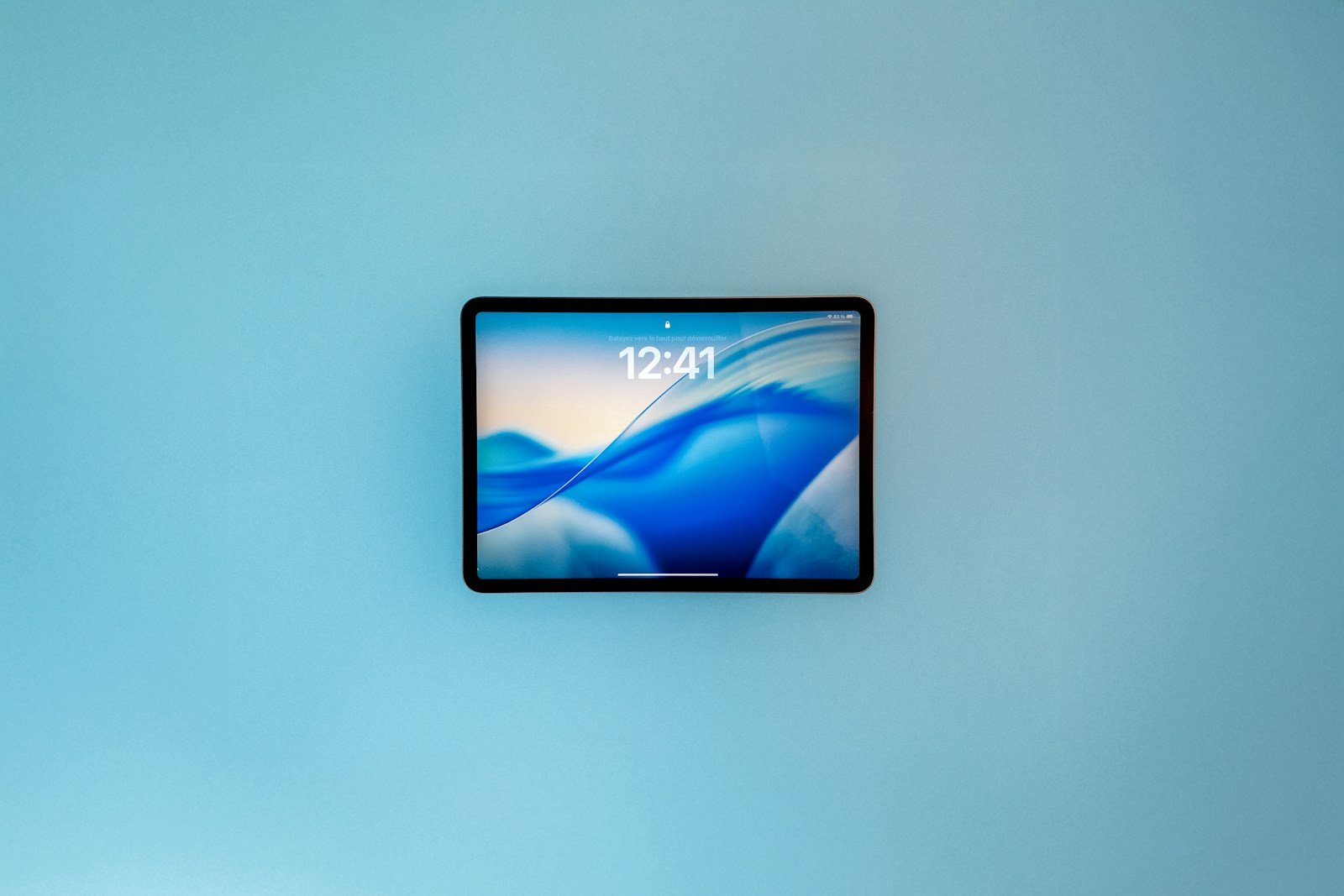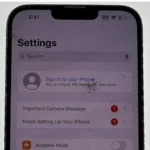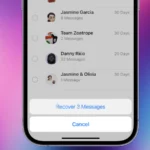The iPad, Apple’s popular tablet, is known for its intuitive design and versatility. It offers a range of features that cater to both newcomers and seasoned users. Beginners may find that setting up and exploring their new iPad is quite straightforward. Apple designs its tablets with user-friendliness in mind, making the iPad a great starting point for those new to tablets. As users embark on their iPad journey, they’ll discover a myriad of functionalities ranging from basic setup to advanced personalization.
Getting to know a new device can be exciting. The iPad’s touch interface provides a direct way to navigate and control various applications and settings. Users can customize their experience by organizing apps and adjusting system settings to their preference. Learning simple gestures and shortcuts can greatly enhance how one interacts with their iPad. The Apple ecosystem also ensures a seamless integration with other Apple devices and services, making the iPad a powerful companion for both personal and professional use.
Once familiar with the basics, iPad users can take advantage of more advanced features that the device offers. Optimizing battery life, creating detailed reminders, and using split-view for multitasking are just a few of the tricks that can improve the tablet’s functionality. With regular updates and an expansive app store, the iPad continues to evolve, providing users with new tools and features to explore.
So, you’ve just unboxed your first iPad — congratulations! Whether you’re using it for work, school, or entertainment, Apple’s iPad is a powerful and versatile device. But if you’re new to iPads (or tablets in general), it can feel overwhelming at first. This guide will walk you through the essential tips every beginner should know to get the most out of your new iPad.
1. Get Familiar with the Basics
- Home Button vs. Gestures:
- If your iPad has a Home button, press it to return to the Home Screen.
- If it doesn’t, swipe up from the bottom of the screen to go Home.
- Control Center: Swipe down from the top-right corner to access brightness, Wi-Fi, Bluetooth, and other quick settings.
- Notifications: Swipe down from the top-left corner to see recent alerts.
2. Set Up Face ID or Touch ID
Security is important. Go to Settings > Face ID & Passcode (or Touch ID & Passcode) to set up biometric unlocking. This makes logging in and purchasing apps much faster and safer.
3. Explore the App Store
The App Store is where you’ll find apps for productivity, creativity, and fun.
- Download essentials like Safari, Mail, Notes, and Files (already pre-installed).
- Try popular apps like Microsoft Office, Google Docs, or creative tools like Procreate.
- Many apps are free, but some require subscriptions.
4. Master Multitasking
iPads are great for productivity thanks to multitasking features:
- Split View: Open two apps side by side (e.g., Safari and Notes).
- Slide Over: Pull an app from the dock to float it over another app.
- Picture-in-Picture: Keep videos playing in a small window while you use other apps.
5. Use the Apple Pencil (If Supported)
If your iPad supports the Apple Pencil, it’s worth trying:
- Take handwritten notes in the Notes app.
- Sketch or draw in apps like Procreate or GoodNotes.
- Use Scribble to write in any text field — your handwriting will convert to typed text.
6. Organize Your Home Screen
- Widgets: Add widgets for weather, calendar, or reminders.
- Folders: Drag one app on top of another to create a folder (great for organizing games, work apps, etc.).
- Dock: Keep your most-used apps in the dock at the bottom for quick access.
7. Learn iCloud Basics
iCloud keeps your files, photos, and notes synced across all Apple devices.
- Go to Settings > [Your Name] > iCloud to turn on syncing for apps like Photos, Notes, and Contacts.
- With iCloud Drive, you can access your files from any Apple device or via iCloud.com.
8. Try Voice Commands with Siri
Siri is Apple’s voice assistant.
- Activate by saying “Hey Siri” or holding the top button.
- You can ask Siri to set reminders, send messages, open apps, or answer questions.
9. Keep Your iPad Updated
Apple regularly releases software updates with new features and security fixes.
- Go to Settings > General > Software Update to check for the latest iPadOS version.
10. Protect Your iPad
- Case & Screen Protector: Prevent scratches and drops.
- Find My iPad: Enable it in Settings > [Your Name] > Find My to track your device if it’s lost.
- Backups: Turn on iCloud Backup so your data is always safe.
✅ Final Thoughts
The iPad is more than just a bigger iPhone — it’s a productivity tool, entertainment hub, and creative canvas all in one. By learning these basics, you’ll be able to navigate your iPad with confidence and unlock its full potential.
Key Takeaways
- The iPad excels in ease of use and personalization options for new users.
- Basic gestures and system familiarity are critical for getting the most out of your iPad.
- Advanced features and regular updates continually enhance the iPad’s functionality.
Getting Started with Your iPad
Whether you’ve got an iPad Air, iPad Pro, or iPad mini, setting up your device is the first step. This section walks you through the initial setup, helps you understand the Home Screen, and guides you on how to navigate your iPad.
Setting Up Your iPad
Turn on your iPad and follow the on-screen instructions to get started. You will choose your language and region, connect to Wi-Fi, and set up Face ID or Touch ID. Create an Apple ID if you don’t have one; it’s key for downloading apps and syncing data. Make sure to sign in to your Apple ID during setup. You can also set up Siri, Apple’s voice assistant, to respond to your voice for hands-free help.
Understanding the Home Screen
The Home Screen is your starting point. At the bottom is the Dock where you can keep favorite apps for quick access. Swipe left or right to view different pages of apps. The Settings app is your go-to for changes. It lets you control Wi-Fi and Bluetooth connections and configure other settings. Keep your apps organized in folders by pressing and dragging one onto another.
Navigating Your iPad
Explore your iPad with simple gestures. Swipe up from the bottom to return to the Home Screen or show open apps. Swipe down from the top right corner to view the Control Center where you can adjust settings like brightness and volume quickly. Use the Search feature to find apps and content. Access it by swiping down on the Home Screen.
Remember to keep your iPad’s software updated to the latest version of iOS or iPadOS to ensure the best performance and newest features.
Advanced Tips and Tricks
When using an iPad, certain advanced features can greatly enhance one’s overall experience. These tips delve deep into the device’s capabilities, empowering users to work more efficiently and tailor the device to their personal preferences.
Mastering Multitasking Features
The iPad’s multitasking capabilities are a game changer for productivity. Users can activate Split View by dragging another app onto the screen to work with two apps side by side. For quick access to other apps, one can use Slide Over to overlay a second app atop the first. This allows for smoother workflow transitions. The Dock is another multitasking friend. It keeps apps within reach and supports dragging and dropping between apps effortlessly.
Customizing the iPad Experience
Customization allows users to mold their device to fit their style and needs. Widgets offer at-a-glance information and can be added to the Home Screen by pressing and holding, then selecting ‘Edit Home Screen’. Focus modes, accessible through the Settings app, can be configured to allow notifications based on what one is doing. Screen Time helps users track device use for better digital life balance. Guided Access keeps the iPad focused on a single app for preventing distractions or to set parental controls.
Maximizing Productivity with Apps
To make the most out of one’s device, the App Store is packed with apps that can boost productivity. The Notes app, for example, is more than a digital notepad. It allows for creating checklists and adding photos or drawings to notes. With features like Picture-in-Picture, users can watch a video in a small window while working in another app. Stage Manager on supported iPad models with iPadOS 16 takes multitasking further, allowing users to resize windows and create overlapping app views for a more desktop-like setup.







